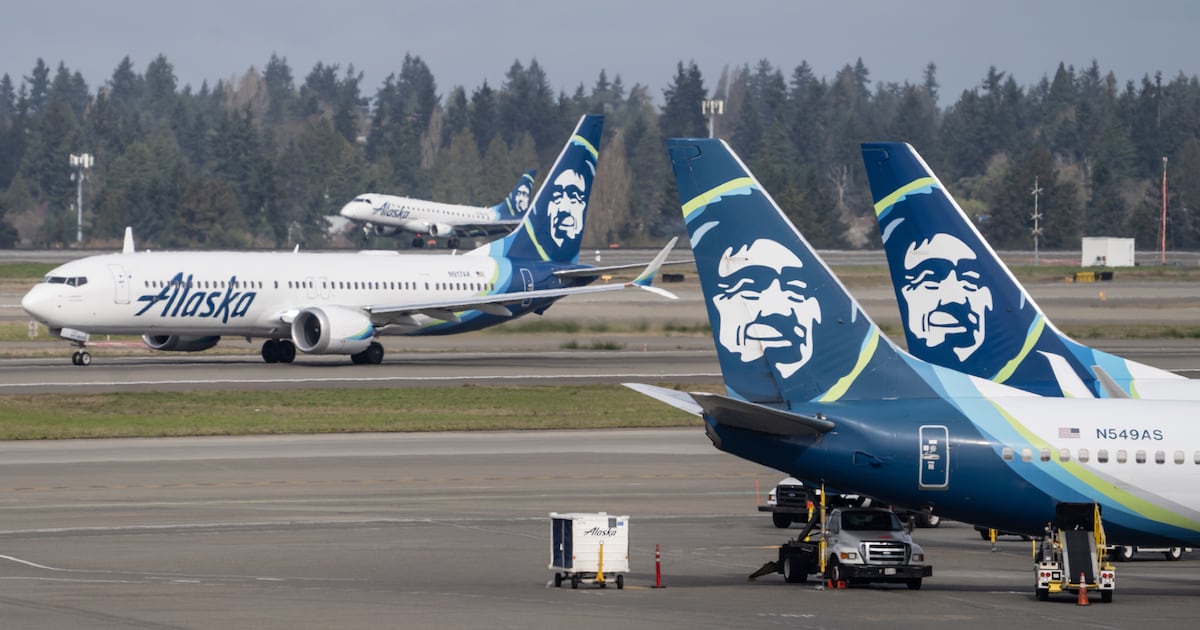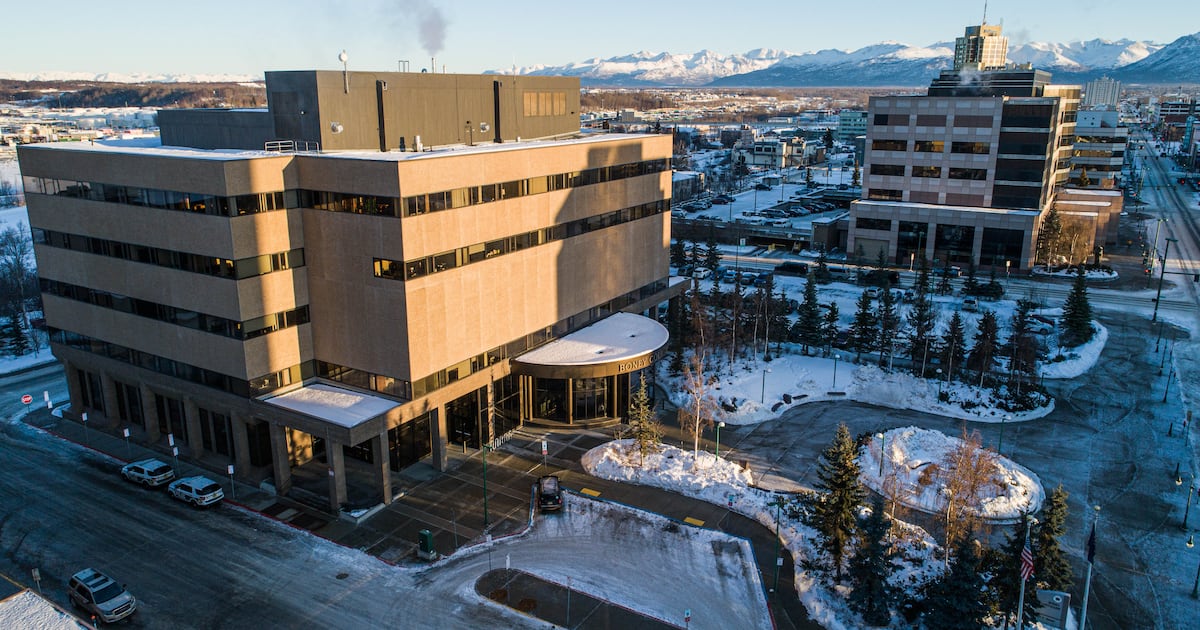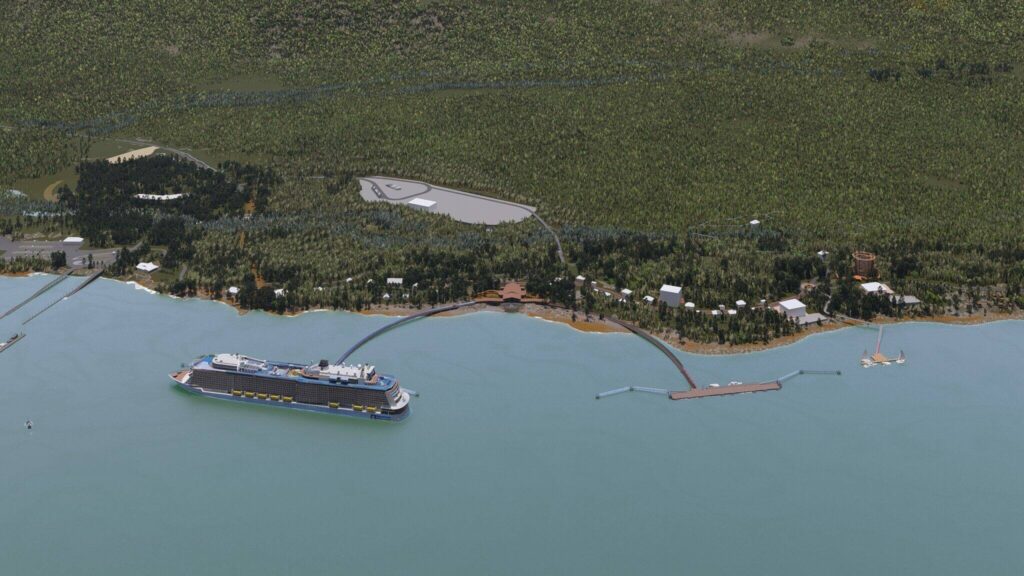An Alaska Airlines jet takes off at Seattle-Tacoma International Airport. (Stephen Brashear/Getty Images/TNS file)
SEATTLE – The FAA’s plan to reduce air traffic by 10% across dozens of the nation’s busiest airports beginning Friday will likely affect Sea-Tac Airport travelers, though government officials and airlines were mum on details following Wednesday’s announcement.
The Federal Aviation Administration said it would cut traffic across 40 “high-volume” markets to provide relief to air traffic controllers, who have been working without pay because of the government shutdown.
The agency didn’t specify which airports will be affected, but Seattle-Tacoma International Airport will likely be among them, based on its ranking in the top 15 busiest U.S. airports and in the FAA’s “core 30” airports.
Based on early estimates, a 10% reduction on Friday could mean a cut of 55 Sea-Tac flights, representing 8,114 seats, according to an analysis by the aviation analytics firm Cirium.
Alaska Airlines said it’s staying in close contact with the FAA and awaiting further guidance. Delta Air Lines, the second-biggest carrier at Sea-Tac after Alaska, deferred comment to the U.S. Transportation Department and FAA.
Passengers whose flights are delayed or canceled should go to their airline’s website for up-to-date information.
Passengers are entitled to a refund, regardless of the reason, if an airline cancels or significantly changes a flight. They are not required to accept an alternative booking or a travel voucher.
Those who have a problem getting a refund they think they are entitled to may file a DOT complaint, according to the FAA.
Air traffic controllers direct 44,000 commercial passenger, cargo and private flights daily across more than 29 million square miles of airspace.
In a news conference with FAA Administrator Bryan Bedford, U.S. Transportation Secretary Sean Duffy said his heart goes out to those who will have their flights disrupted. But, he said, the FAA and Transportation Department want to make sure “when they fly, they are going to make it to their destination safely.”
Duffy and Bedford said the agencies didn’t want to wait for a crisis before acting on a safety plan. The decision was praised by National Transportation Safety Board Chair Jennifer Homendy.
“Conducting safety risk assessment and then using data to mitigate that risk is exactly what (the Transportation Department and FAA) should be doing to proactively ensure safety for the traveling public,” Homendy wrote on X.
Sen. Maria Cantwell, D- Wash., when asked by Politico if the FAA’s action was warranted, replied they’re the ones with the data, so don’t know.” Sen. Jerry Moran, R- Kan., called it a “harsh but necessary consequence of the shutdown.
The government shutdown, now the longest ever, reached its 36th day Wednesday. The shutdown has halted pay for many federal workers, interrupted government benefits, including nutrition assistance programs, for millions and led to flight delays.
The shutdown has cost the U.S. travel economy more than $4 billion, according to the U.S. Travel Association, which wrote a letter to congressional leaders urging them to end the shutdown. The FAA cuts come weeks before the Thanksgiving travel season, one of the busiest times of the year for airports.
Sea-Tac has largely avoided traffic snarls caused by the government shutdown, which has led to more flight delays and cancellations and longer security wait times at other airports because higher numbers of air traffic controllers and Transportation Security Administration workers have called in sick.
“Kudos to our federal workers who have shown up and done their jobs without being paid,” Sea-Tac spokesperson Perry Cooper said. “We are thankful for that. But that could change any day.”
Another element helping Sea-Tac is that it’s largely an origin and destination airport, where the majority of passengers are starting or ending their journeys, versus serving as a connection airport. That generally means fewer people stranded at the airport when flights are delayed or canceled.





